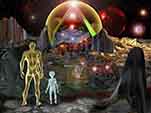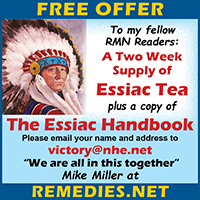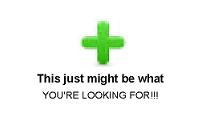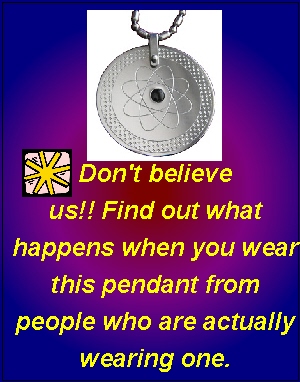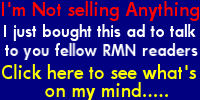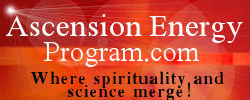http://www.taxmoney-notpeople.com/
TAX MONEY-NOT PEOPLE
TRANSACTION TAX/USER FEE
A TAX SUITABLE FOR THE TWENTY FIRST CENTURY
The essence of the Transaction tax/user fee is that it is not a tax upon any commodity or real property. It is a small fee paid for using the currency of the United States. It does not tax the money a person or entity has until the money is moved. To the worker it amounts to a fee of one dollar for each one thousand dollars earned or spent. Under the existing tax code a taxpayer who earns forty five thousand dollars a year is taxed over four thousand dollars. Under the “user fee” he would pay a maximum of ninety dollars if he spent all the money he earned. If he did not spend it all he would pay no tax on the money that remains in the bank. This concept will derive revenues in proportion to the wealth a person uses not the wealth he has.
The present tax code is very limited. It only taxes the gross adjusted income of the workers and the gross profits of business firms. It is from this narrow tax base that the bulk of tax revenues are derived. This results in having to have a very large tax rate. In order to lower the tax rate it is necessary to increase the size of the tax base. The concept of using the transaction tax/user fee would increase the size of the tax base more than fifty times the GDP. It would, with a rate of one tenth of one percent raise more revenues than is collected by the Federal, State and Local tax codes combined.
Under the present system of taxation there are numerous exemptions. Most of these benefit businesses. The larger the business the more these advantages apply. They are in the form of deductions, exemptions and tax credits as well as numerous loopholes that are included in the forty four thousand pages that make up the federal tax code. Defense contractors are exempt from paying taxes on their profits. There are tax-exempt bonds, and numerous ways persons and corporate entities can shelter income against taxation. Charitable, religious, educational, non-profit businesses etc. all contribute to increasing the size of the tax rate by removing this source of money from the tax base. In contrast a transaction tax/user fee would have no exemptions at all. The “user fee” of only one tenth of one percent would be almost insignificant, which would certainly be the case if the transaction tax/user fee were to replace all other existing forms of taxation.
Under the present system, the cost of collecting the tax equals a large percentage of the money collected. In 1998 the budget for the Internal Revenue Office was thirty three billion dollars. The money collected from individual income taxes was $829.billion. The money collected from corporations was $189.billion. Excise taxes were $58.billion. Receipts from other sources not including Social security were $75.billion. These total $1,151.billion. It costs the government $33.billion to collect the $1,151.billion. In addition to the cost to the government the cost to those who pay the taxes including payments to those individuals and firms like H&R Block who prepare the taxes. The large corporations pay tax lawyers, tax consultant’s, and CPAs who constitute an industry for the sole purpose of searching the tax code for loopholes that will reduce the tax burden of their employers. If we total all the cost to government and the private sector the total might exceed the amount of money collected. In contrast the cost of collecting a transaction tax/user fee “…would be a very easy levy to collect. The bank doing the final processing of the transaction would simply program its computer to deduct from the account the amount of the tax as it deducts the amount transferred in the transaction. Remittance could then be made to the treasury’s tax and loan accounts that are presently maintained within the commercial banking system. The financial community could be allowed to retain a small portion of the amounts collected, perhaps one percent, for serving as collection agent. The entire system could operate virtually automatically for most routine transactions. Most recipients would thus not feel the imposition of the “fee.” The payers would probably treat the small sum deducted as a nuisance only, of even lesser irritation to them than sales taxes.” Quote from CRS Report for Congress 88-103 E. Other transactions outside of the banking system should not be any more difficult to collect.
In 1998 the Federal government collected $1,150billion. The State and Local governments collected $I,148.billion in the same year. The total of the two amounted to $2,298billion. The Gross Domestic Product for 1998 amounted to $8,511billion. The total of taxes collected by Federal, State and Local governments represents about 37 percent of the GDP. Under the present tax code the bulk of tax revenues come from the GDP. In 1998 according to the annual report of the Federal Reserve Board of Governors over $550 trillion moved through the FED banking system. The transactions on the Dow Jones and the NASDAQ stock exchanges topped 2 billion shares on many days during 1998. The value of corporate takeovers and acquisitions totaled hundreds of billions in the same year. It is the total of all these transactions that the transaction tax-user fee would derive its revenues. With a tax rate of only one-tenth of one percent it would be the source of the money to build the needed infrastructures and research and development of environmentally clean fuels and other technology needed for the survival of the human species through the next millennium.
The federal tax code is recognized by many both in and out of government as being an ominous burden upon the middle class taxpayers. The States depend on income taxes, sales taxes or a combination of the two as a source of revenues. Local governments depend mainly upon real estate taxes with about 50 percent of their revenues going to pay for the public schools. The average tax payer pays over $4,000 a year to the federal government in income taxes must also pay real estate taxes to the local government and sales and income taxes to the State government. The total taxes require the average taxpayer to work one third of the year to meet this tax obligation. If a transaction tax/user fee could reduce this tax burden to one dollar for every thousand dollars earned or spent it would be folly to continue to hold to old systems that are better suited to the nineteenth or twentieth centuries. A new age needs new paradigms the old will not suffice. The status quo must be replaced with systems that will work for a new age. It is the new technology that makes the transaction tax/user fee a concept whose time has come. A proposal was made in 1998 for a limited transaction tax this was sent by congress to the Congressional Research Service of the Library of Congress. This was a good proposal. However, It was limited and could be circumvented for several methods. These methods are included in the report that was sent to congress by the CRS. The report has been copied and follows:
CRS REPORT FOR CONGRESS 88-103 E
By
William Jackson Specialist in Money and Banking and Jack Taylor specialist in Public Finance. Economic Division. January 5, 1998
A FINANCIAL TRANSACTIONS TAX?
THE PROPOSED FEDERAL PAR USER’S FEE
Proposal to cut the gigantic federal deficit have ranged far and wide. Among them is an innovative suggestion to levy a new Federal tax that would be broadly based: the proposed “par user’s fee.” As developed by tax lawyer John S. Newman, it would collect a small sum from all checks, direct deposits, and many other noncash transfers of funds through the banking system. The proposal is presented and analyzed below.
DESCRIPTION OF THE PROPOSAL
Revenue Base
Most economic activity in the United States is mirrored in financial transactions flowing through the banking system in the form of checks, drafts, electronic funds transfers. Each stage of the production and sale of a good or service in the economy generally requires numerous financial transactions (loans, other capital transfers, payments to suppliers of labor and intermediate products. Except for those handled by barter or cash, most transactions go through the U.S. bank clearing system. The sum of all these financial transactions is a very large number, many times larger than the gross national product. Mr. Newman has estimated it as $220 trillion. This sum represents money moving into and out of various financial accounts, and for banking purposes there is a record of each such movement. This is the base that Mr. Newman proposes to tax.
The tax would be levied at some very low rate—Mr. Newman suggests one-two-hundredth of 1 percent, or .00005—on each transfer out of an account with a financial institution. Inter-bank clearances and certain inter-account transfers would be exempt. Cash movements would likewise be exempt. Government transfers would be taxed on their deposit rather than their withdrawal (i.e., taxed to the recipients instead of the governments, as an exception to the general collection rule). The bank handling the account involved in the taxed transaction would \deduct the required tax from the account and remit if to the Federal Government at the same time that it deducted the principal amount from the account, making collection virtually automatic.
Is it a User Fee?
The proposed tax is called a “user fee” by its author because it is levied on a financial system created and maintained by the Federal Government. Mr. Newman suggests that it can be viewed as a fee for the services provided by the government. In clearing transactions and insuring deposits. Mr. Newman characterizes his fee as a “par” fee in return for the Government ensuring acceptance of checks at 100 cents on the dollar (par), without recipients worrying whether the instrument would be redeemed a par by the issuing bank. This terminology stems from conditions in banking that existed many years ago, when bank liabilities issued in one location were subject to discounts if presented elsewhere, i.e., “nonpar” valuation for their presenters.
In most tax literature, “user fee” means a government charge related to the cost of providing the government services, analogous to a price in the private economy. The charges presently levied against financial institutions for Federal deposit insurance, wire transfers, and the like by their regulators are “user fees” in this sense. Mr. Newman’s proposed fee is in addition to the present fees and is intended to raise revenue for general Government use. Not to reimburse specific Government costs.
Indeed, to the extent that Federal legislation (beginning with the National Bank Act of 1863 and continuing through P.L. 96-221) has forced depository financial institutions to maintain cash reserve to among other things, facilitate the clearance of payment instruments, some would suggest they already more than compensate the Government for such services by submitting to a large implicit tax: lost earnings on the reserve. The “reserve tax: seems to be largely passed on to customers in the form of service charges and lowered or zero interest on checking accounts.
ARGUMENTS IN FAVOR
Mr. Newman estimates the base for his proposed “user fee”. The sum of the transactions clearing the banking system annually, as “at least $220 trillion.” (CRS is unable to verify this estimate independently.) Clearly the proposed tax base is very large a very large base can be combined with a very low, unobtrusive tax rate to produce large Government revenues without unduly upsetting taxpayers. Very low rates make evasion and avoidance unprofitable activities for most taxpayers, as was the case in the successful collection of Federal “stamp duties” on many financial transactions in the 1860s. The levy would not likely be large enough (at Mr. Newman’s suggested rate) to induce many payers to shift to barter or cash payments and the “underground economy.”
The tax would be a very easy levy to collect. The bank doing the final processing of the transaction would simply program its computer to deduct from the account the amount of tax as it deducts the amount transferred in the transaction. Remittance could them easily be made to the Treasury’s tax and loan accounts that are presently maintained within the commercial banking system. The financial community could be allowed to retain a small portion of the amounts collected, perhaps 1 percent, for serving as collection agent. The entire system could operate virtually automatically for most routine transactions. Most recipients would thus not feel the imposition of the “fee.” The payers would probably treat the small sums deducted as a nuisance only, of even lesser irritation to them than sales taxes.
The extensive records presently maintained in the banking system would be adequate to allow Government verification and audits of the tax collection system. Unlike most other new tax proposals, no elaborate new system of administering the tax would be required, at least for those transactions that stayed within the present bank clearance system. The proposed low rate of tax would make extensive efforts to avoid the tax uneconomical for smaller transactions, further simplifying the administration and enforcement problem
Changing rates of tax would be a fairly simple matter that could be accomplished quickly (at least as an administrative problem) by merely notifying the banks to change the rate in their computer programs. If quick rate changes for fiscal policy reasons were politically feasible in this country, this tax could certainly be designed to accomplish this purpose easily.
ARGUMENTS AGAINST
For taxpayers with large aggregate financial transactions (i.e., major corporations), even a low rate of tax can be profitably avoided if the cost of avoidance is relatively small. Since this tax would strike only transactions clearing through the U.S. banking system it could be avoided by dealing in cash, be barter arrangements, or by conducting the transaction through foreign banking systems. Extensive efforts to prevent this type of avoidance could lead to far greater administrative costs; but the possibilities for avoiding the tax could reduce considerably Mr. Newman’s estimated tax base of $220 trillion.
Another possibility for avoiding the tax, and thus reducing the tax base, would be vertical integration of operations. Payments to outside suppliers go through the banking system and thus would incur the tax; the same item supplied from within the corporation could avoid the tax. This is a common effect of European-style “turnover” taxes, and other taxes like this one, can be decreased by decreasing the number of transactions involved in an operation.
This tax may be overstated in another sense, also. The base is so very large because it counts the same dollars over an over again. Gross national product (GNP), the final market value of all economic transactions, is around $4.5 trillion; financial transactions totaling $220 trillion are the sum of many turnovers of the dollars making up GNP, as well as many movements of capital and financial paper that do not add to the GNP as any other $11billion tax would be, regardless of the stated rate. The $11 billion is almost exactly one-quarter of one percent of 1987 GNP. In absolute dollars, it is essentially the same amount as the revenue shown in the 1987 budget from the Federal excise taxes on tobacco and alcohol. The continuing absorption of small sums from the circular flow of dollars reflecting ongoing transactions becomes clearer in chart 1 (on the next page—the spatial relationship of the 50-cent deduction from the $100 circle is clearly not to scale).
The fact that this proposal would tax the same dollars again and again as they move through the economy makes it difficult to determine the final incidence of the tax. The tax represents an increase in the cost of doing business for business taxpayer, and it may be assume that the tax, like other costs, would be passed forward in price increases wherever possible. Since the tax is on financial rather than real transactions, however, its impact on the final price of any good or service depends on the number of financial transactions it takes to make each purchase at each stage of production (e.g., a check to purchase an intermediate good from a supplier, a check from the supplier to the earlier stage input supplier, checks for loans to cover each item used, and so on for each stage of production and final sale of each product). If the accumulated tax on all such transactions were ultimately passed through to final consumers, the tax would be the equivalent of a sales tax on all goods and services levied at a rate (expressed as a fraction of final sales price) considerably in excess of the stated rate pf .00005. In the case of the stamp taxes of the 1960s mentioned above, for example, final product prices rose be many times the totals off the par-item intermediate-stage taxes.
Politically, the relatively “hidden” nature of the tax and the ease with which its rates could be raised would not be regarded as positive points by everyone. Some prefer to have taxes that are not easily ignored as a means of imposing fiscal discipline on Government activities.
SUMMARY
The proposal has appealing features. Its very low rate, making the tax virtually unnoticeable by most taxpayers, combined with the very large base many times GNP, could possibly produce large amounts of revenue fairly painlessly. It would rely on a well-established system of electronic records and thus could be an easy tax to collect.
The proposal has disadvantages in that : (1) transactions could be structured so as to escape the tax (cash, trade credits, asset swaps) on very large transactions; and (2) the tax would increase business costs and thus could be presumed to increase the price of goods and services throughout the economy. The rate of price increase, however, would depend on the financial transactions involved in the production and sale of the products, since each separate financial transaction increases the total tax bill. This “cascading” effect is ultimately passed through each stage of production as price increases, as the similarity cascading turnover taxes often used in Europe are, the tax would ultimately be borne primarily by consumers.
All of the disadvantages listed in the summary above would no longer be disadvantages, once the limitations are removed and the tax becomes a universal tax replacing all other forms of taxation.
WE NEED
A TAX FOR THE TWENTY FIRST CENTURY
PROPOSED LAW:
A tax of one tenth of one percent shall be levied on all transactions having a monetary value.
INCLUSIONS
All transactions either in cash, checks, electronic transfers, credit lines, transfers of goods or properties, stock certificates, securities, transfers of assets between business entities etc.
EXEMPTIONS
No exemptions to any individual, corporation, or agency including governmental, quasi-governmental entities, nonprofit corporations, fraternal or religious institutions.
The power of money of
money
Text by PETER T. WHITE
Taken from the January 1993 issue of the National Geographic Magazine
“…Bills and coins make up about 8 percent of the U.S. money supply—the rest is in bank accounts, including checkbook money; at this writing the sum total is 3.5 trillion dollars, says the Fed—The Federal Reserve System, which is the central bank of the government of the United States—and that is three billion more than a month ago. This is how that happens.
Every business day, after a telephone conference call at 11:15 a.m., the Federal
Reserve Bank of New York, acting on directives from the Federal Open Market
Committee at Fed headquarters in Washington buys U.S. government securities
From major banks and brokerage houses, or sells some—usually U.S. Treasury bills,
Which in effect are government promissory notes. Say today the FED buys a
Hundred million dollars in Treasury bills from those big securities dealers, who keep
a stock of them to trade with the public. When the Fed pays the dealers, a hundred
Million dollars will thereby be added to the country’s money supply, because the
Dealers will be credited that amount by their banks, which now have that much
more on deposit.
But where did the Fed get that hundred million dollars? “we created it,” a Fed official tells me. He means that any time the central bank writes a check, so to speak, it creates money. ”It’s money that didn’t exist before.” He says.
Is there any limit on that?
“No limit. Only the good judgment and the conscience of the responsible Federal Reserve people.”
And where did they get this vast authority?
“It was delegated to them in the Federal Reserve Act of 1913, based on the Constitution, Article 1. Section 8 ‘Congress shall have the power…to coin money, regulate the value thereof….’ ”
Now watch how that Fed-created money lets our commercial banking system create even more. The Fed requires banks to put aside a portion of their depositors’ funds as reserves. Say this reserve ratio is set at 10 percent—then for every $1000 in new deposits, a bank must keep at least $100 in reserve but can loan out the rest, namely $900. On the banks books this loan remains as an asset, earning interest until it is paid off the customer who got the loan is likely to spend it right away, say for a used car. The car dealer deposits the $900 check in his bank, which then has an additional $900 in reserves and can in turn loan out 90 percent of that--$810. And so on and on. until the original $1000 put into one bank may enable dozens of banks to issue a total of $9.000 in new loans.
Thus a hundred million dollars injected by the Fed into the commercial banking system could theoretically stimulate the appearance of 900 million dollars in new checkbook money—money that didn’t exist before. And it’s all built on the assumption that the system is sound. “
A copy of the 1993 issue is available for $5.00 from the National Geographic single issue, P.O. Box 6001 Tampa, FL ,3366. if you would like to read the entire article.

